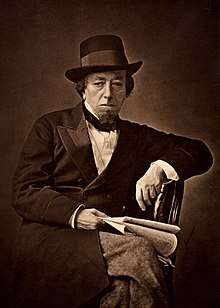The Liberal Party
When Lloyd was born, there were two political parties — the Whigs and the Tories, later called Liberals and Conservatives. Right- and left-wing, the 20th century divider, cannot be applied to the 19th. Both would now be called right-wing.
Broadly, the Tories were aligned with hereditary power — Crown, Church and aristocracy. The Liberals believed that government should be “of the people” as represented in Parliament — the propertied classes, since only they could vote.
For much of the 19th century, neither party could be called democratic in any meaningful sense. By the end of the century, Gladstone’s support for Irish Home Rule had caused a schism. A strong faction, later associated with David Lloyd George, had embraced social reform. A newspaper that proclaimed itself Liberal therefore had a choice of political viewpoint.
MPs were not beholden to a party in the modern way, so they might change sides as policy changed or remain independent throughout. Some individuals were influenced by radical thinking either generally or on specific issues. By 1830, when the Liberals formed a lasting government for the first time in 50 years, they led with the electoral reform of 1832 and then with a modernisation of local government in 1835. They also stressed the rule of law and the civil liberties set out in the Bill of Rights. Under Gladstone, all three “taxes on knowledge”— advertising, news and paper — were repealed.
Liberal has a wholly different meaning according to whether it is applied to economic or social reform. The Liberals favoured the first, opposing what would now be called “big government”. For most of the century, this meant low taxes, low spending and laissez-faire.
The cost of some social liberalism could be passed on to employers, such as improvements in education and child labour, but the Liberals’ attitude to the poor was far from benign. For example, the reformed Poor Law in 1834 used workhouses as the sole distribution outlet for poor relief and sought to deter “scroungers’ by making conditions in them worse than those outside. The unemployed, possibly up from the countryside looking for work, were put to hard manual labour to help pay the running costs.
Alongside all this frugality, what must be the most profligate event in British history occurred in 1833. When slaves were liberated, their former owners received the astonishing sum of £20m (more than £2 trillion now) in compensation.
Researchers at University College London have created the Encyclopedia of British Slave Ownership detailing the payments made to the former owners of the slaves in the colonies. They found that ownership was widely distributed among the general population. About half was paid to residents of the UK who, as absentee owners, treated slaves simply as a form of investment.
The economic effect must have been comparable to that intended by quantitative easing after the 2007 financial crisis, yet it makes the £375bn spent on that look trivial. It was not a money creation exercise — inflation was -3% over the rest of the 19th century. A significant portion would have been invested in company shares and business ventures. The contribution it made to the UK’s industrialisation must have been highly significant.
UCL has yet to research what happened to the £10m that was paid to the former slave owners in the colonies. No industrialisation followed there and the former slaves, far from benefiting from the largesse, continued to suffer cruelly under the indentured labour regime that followed. Some part of that may also have found its way back home.
The Liberals’ antipathy to social liberalism at home was also evident in the Irish Famine. The Tory prime minister, Robert Peel, sent food aid privately and managed to get Parliament’s agreement to repeal the Corn Laws, so abolishing tariffs on imported grain. But Lord Russell, a Liberal, won a mid-year election in 1846 and put his faith in laissez-faire.
A savage version of the Poor Law was applied. Nothing was done about exports. On the contrary, it has been calculated from the records that Ireland was a net exporter of food, mainly to England, during the seven years of famine.
Repeal of the Corn Laws dominated politics for some years. Neither party monopolised the support or the opposition. Bread riots unnerved government, yet it was an extra-parliamentary alliance of radicals and working people on the one hand, and industrialists who wanted to pay their workers less on the other, that spearheaded the repeal movement.
MPs from both parties supported their efforts. The Tory members were called Peelites. After joining a coalition with the Liberals, they formally merged with them in 1859. The Peelites included William Gladstone who served 60 years as an MP and 14 years intermittently as Liberal prime minister. Benjamin Disraeli, both a protectionist and a sympathiser with radicals, stayed put.
Despite Disraeli's having spent only seven years as prime minister, these two MPs led a realignment of politics in the second half of the 19th century. Gladstone was conservative by disposition and a vehement anti-socialist while achieving some radical outcomes. Disraeli achieved many liberal social reforms, while being a staunch Tory and a jingoist for empire.
Many of the big controversies in mid-century concerned foreign policy, including overseas military engagements. Gladstone, ever anxious to save money, favoured peace and modest flag-waving, but none was a "small-L" liberal matter.
Gladstone espoused individual liberty, by which he meant something close to the present-day US libertarianism: he believed in the liberty to acquire and own property. Social welfare was to be left to the self-reliance and philanthropy that would be destroyed by public money. He supported the Tory law to allow peaceful picketing by trade unions but adhered to his belief that public action to relieve the poorly paid would somehow injure the working population. He attributed such harmful paternalism to the Tories.
He made enlightened reforms to public administration, including electoral and judicial reforms, education and lower tariffs. He expressed dismay at the consignment of the retired to the workhouse, but took no action. His last liberal gesture, just before retirement, was a law securing education for blind and deaf children.
Gladstone's downfall came from his dogged pursuit of devolution in Ireland. Although he personally supported Home Rule, his advocacy did not arise from a sudden rush of social liberalism but because the Irish Parliamentary Party now held the balance of power in the Commons. Voting for the party had been transformed by the recent enfranchisement of Irish Catholics.
His conversion to the Irish cause in 1885 was rapid — only four years earlier he had promoted the Irish Coercion Act allowing the suspension of habeas corpus. In 1886, his first Home Rule Bill split the Liberal Party, so it was lost and he was out of office for six years. In 1893, a bill passed by the Commons was vetoed by the Lords. He resigned in 1894, aged 84.
For some decades, with a Liberal Party basing its ideas on the free market and a Tory Party acting largely in the interests of the owners, social reform progressed incrementally at best.
In Germany, meanwhile, the foundations of a welfare state were laid in the 1880s by Chancellor Otto von Bismarck — a fierce anti-socialist and hardly the poster-child for liberal democracy. In fact, his actions were driven partly by the desire not to give political capital to the socialists and partly by the economy. A severe recession from 1873 had resulted in mass emigration to the US.
His programme covered sickness, disability and accident insurance, and pensions for the over-70s. All were contribution-based, although central government did have to produce some start-up funding for pensions. This not only halted emigration but, by the 1890s, had helped to make Germany an industrial powerhouse rivalling the UK.
Similar measures were not proposed in the UK for another 20 years. Pressure to do so grew after 1900 when the Labour Party was created. The Liberal government of 1905–15 introduced laws setting up the basic aspects of social security — pensions, health and unemployment insurance — as well as some labour law and safety at work measures that Bismarck had rejected.
In the 1890s, under the influence of younger members such as David Lloyd George, the “independent Liberals” began to favour government action to correct market failure, provided it stood back and acted objectively in the public interest. It still opposed direct public intervention in the economy.
The Daily Chronicle supported members of this wing of the party, at least partly justifying the general Liberal allegiance that is always attributed to the paper. However, had the Labour Party been created in 1870 rather than 1900, it seems more than possible that the Chronicle would have supported that.
In conclusion, it must be fair to say that supporting the Liberal Party in the 19th century was far from synonymous with being a believer in “liberal” values, although the two sometimes coincided. The century began with a party that opposed government intervention of any kind, went on to adopt a severe form of neo-liberal economics, and ended with a vision of government in the public interest that lasted well into the 20th century.


.jpg)

